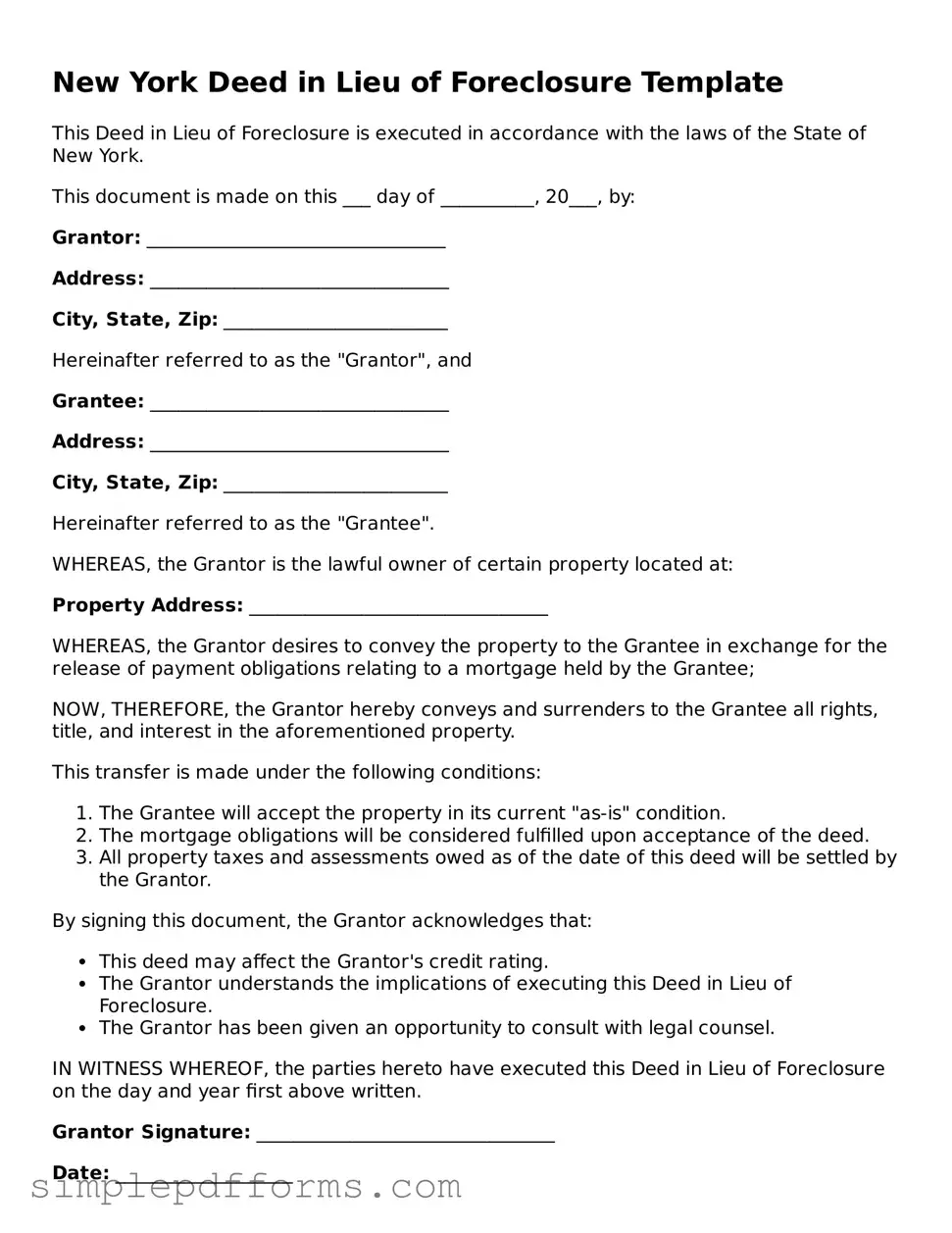New York Deed Template
This New York Deed is prepared in accordance with the relevant state laws and is meant to serve as a formal document for property transfer in the state of New York.
Grantor: ________________________________________
Address: ________________________________________
City/State/Zip: ________________________________________
Grantee: ________________________________________
Address: ________________________________________
City/State/Zip: ________________________________________
Property Description:
____________________________________________________________________
____________________________________________________________________
Consideration: The sum of $____________________.
For and in consideration of the above-mentioned sum, the Grantor hereby conveys and warrants to the Grantee the property described above.
This transfer is made with the understanding that:
- The property is free of all encumbrances except as stated herein.
- The Grantor warrants that they hold title to the property.
- The Grantee accepts the property in its current condition.
Execution:
In witness whereof, the undersigned has set their hand this ___ day of __________, 20__.
Grantor Signature: ________________________________
________________________
Print Name
State of New York
County of _______________
On this ___ day of __________, 20__, before me the undersigned, personally appeared _____________________________________, known to me to be the person described in and who executed the foregoing instrument, and acknowledged that they executed the same.
_____________________________
Notary Public
